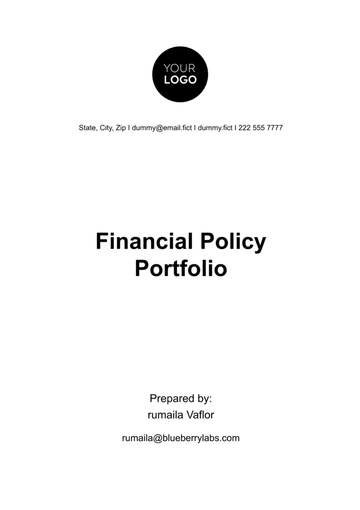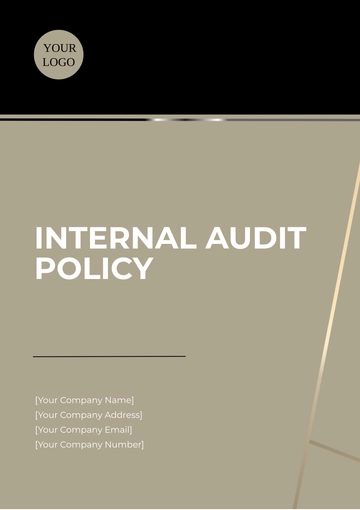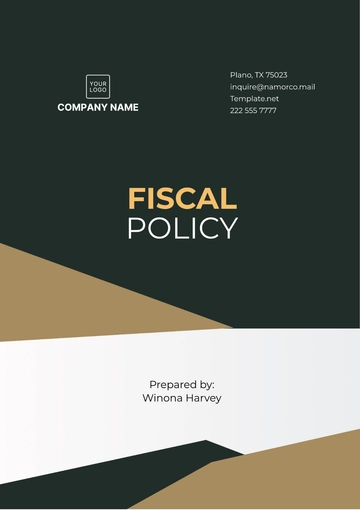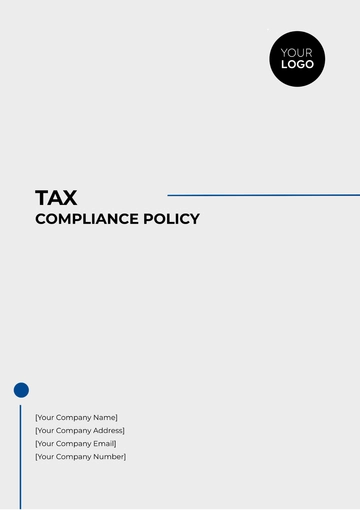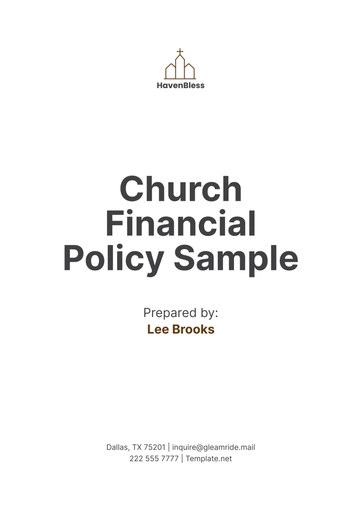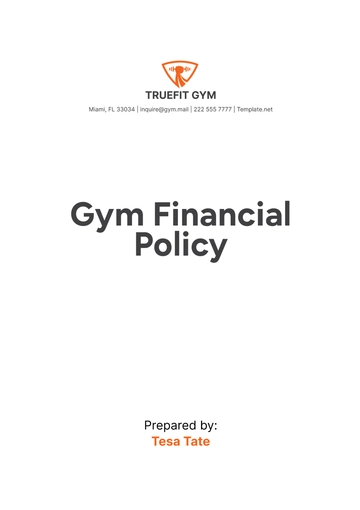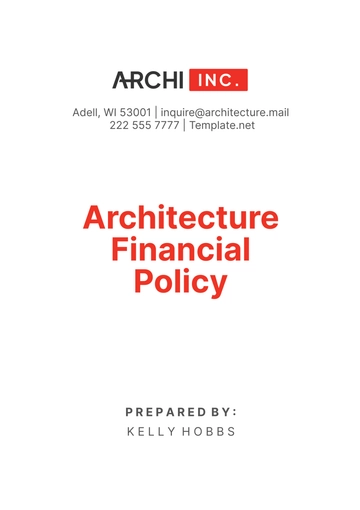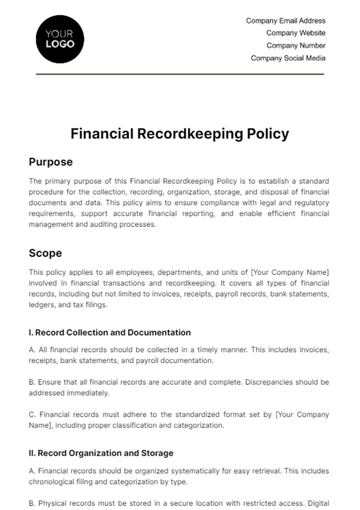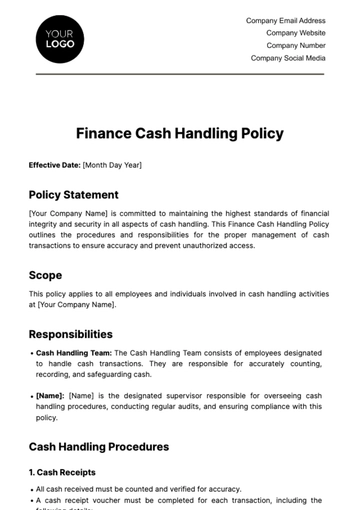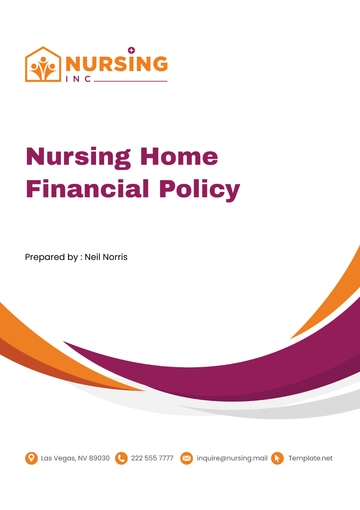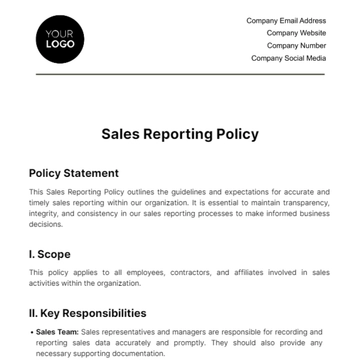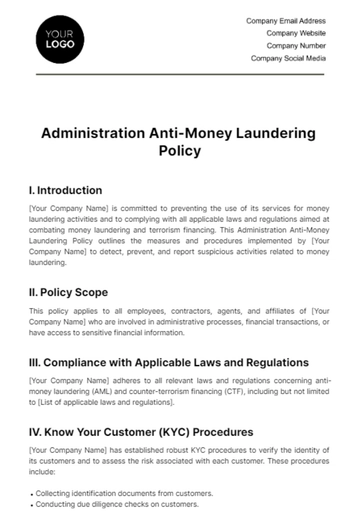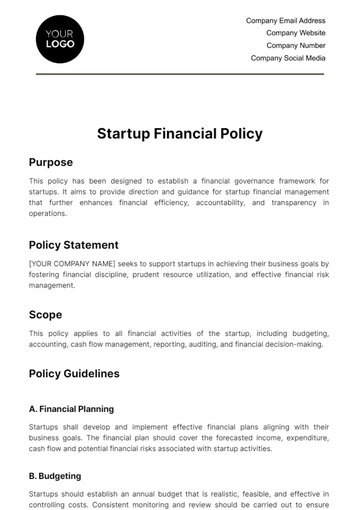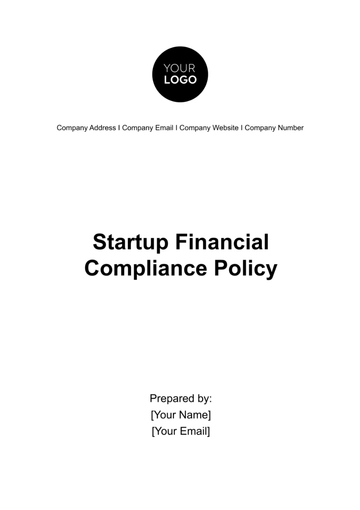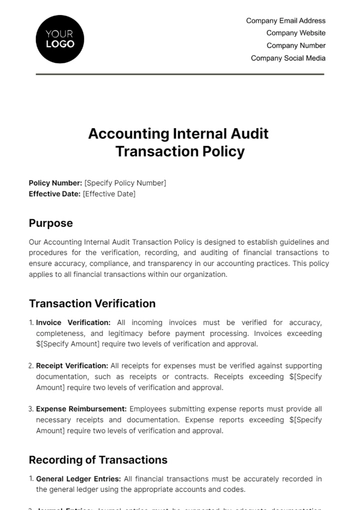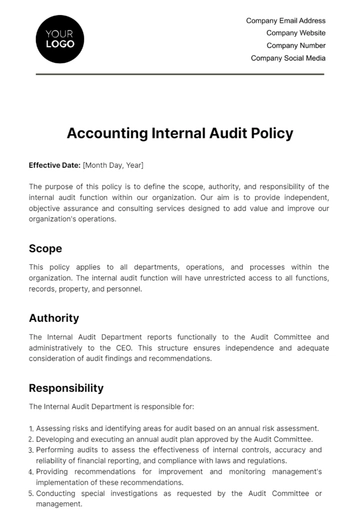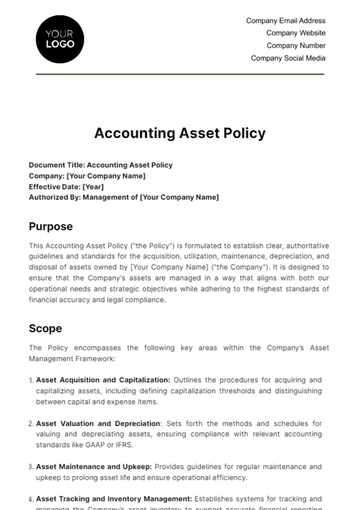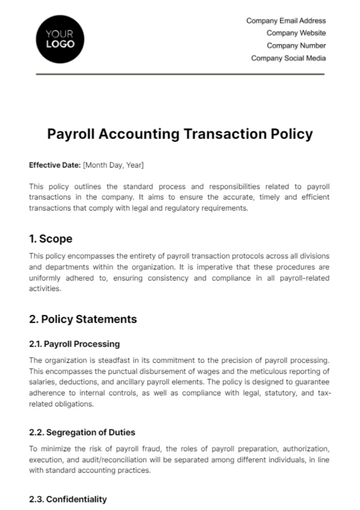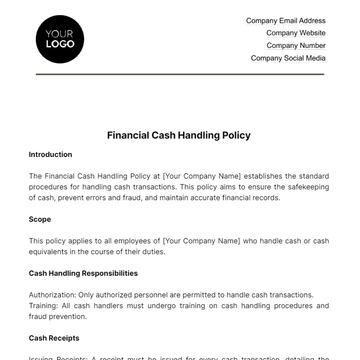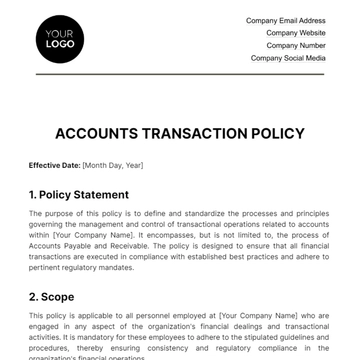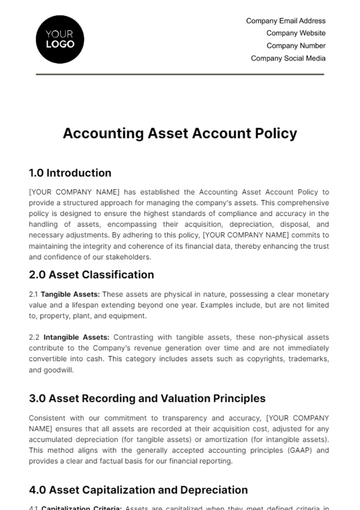Free Financial Policy Impact Study
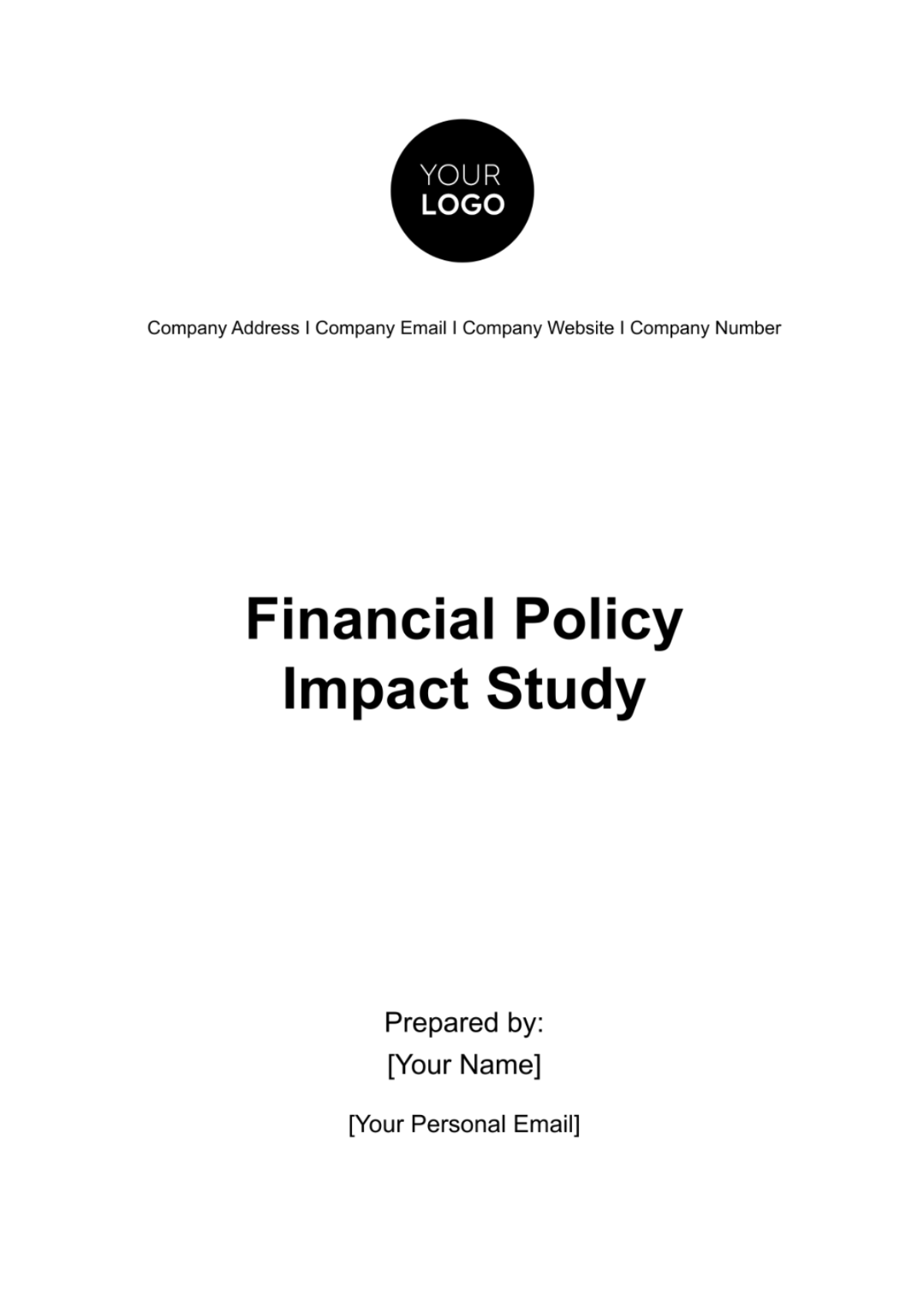
A. Executive Summary
This Financial Policy Impact Study aims to meticulously evaluate the effects of the newly implemented [Product/Event Name] policy on the U.S. financial sector. It assesses the policy's influence on key economic indicators, compliance norms, and stakeholder engagement, ensuring alignment with U.S. laws and standards. The study is critical for guiding [Your Company Name]'s strategic responses to the evolving financial landscape.
Key findings indicate significant shifts in regulatory compliance, market dynamics, and consumer behavior. Based on these insights, the study recommends adaptive strategies for [Your Company Name], emphasizing risk mitigation and capitalizing on emerging opportunities. These recommendations are geared to enhance competitiveness and regulatory adherence under the new policy regime.
B. Introduction
The [Product/Event Name] policy, recently enacted, marks a significant shift in the U.S. financial regulatory landscape. Designed to enhance market stability and consumer protection, this policy introduces new compliance requirements and operational standards for financial institutions, including [Your Company Name]. Its primary objectives are to bolster economic resilience, promote transparency, and safeguard investor interests.
This Financial Policy Impact Study delves into the multifaceted implications of [Product/Event Name] for stakeholders across the financial sector. The scope encompasses an in-depth analysis of economic, regulatory, and operational impacts, aiming to equip [Your Company Name] with a comprehensive understanding for strategic planning and compliance.
C. Policy Description
This section provides a comprehensive overview of the [Product/Event Name] policy. It delves into the policy's critical components, mechanisms employed, and the intended outcomes, offering a clear understanding of its implications for the financial sector. This insight is essential for aligning [Your Company Name]'s practices with new regulatory standards.
Overview of [Product/Event Name] Policy
The [Product/Event Name] policy, enacted in [2050], is designed to strengthen the financial sector's resilience and integrity. It encompasses a broad range of reforms targeting key areas such as risk management, transparency, and consumer protection.
Key Components
Risk Management Enhancements: Introduces stricter risk assessment protocols and capital requirements for financial institutions.
Transparency Measures: Mandates comprehensive disclosure of financial activities, aimed at improving market transparency and investor confidence.
Consumer Protection Framework: Establishes robust guidelines to safeguard consumer interests, focusing on fair lending practices and data security.
Intended Outcomes
The policy aims to:
Bolster the stability of the financial sector.
Enhance consumer trust and security.
Promote sustainable economic growth by ensuring responsible financial practices.
D. Methodology
This section outlines the methodology employed in our Financial Policy Impact Study. It describes the systematic approach used, including data collection methods, analytical tools, and modeling techniques. This foundation is critical for ensuring the accuracy and reliability of our findings regarding the [Product/Event Name] policy's impact on [Your Company Name] and the broader financial sector.
Data Collection and Sources
Primary data gathered from financial statements, regulatory filings, and consumer surveys.
Secondary data sourced from industry reports, market analysis, and academic journals.
Analytical Tools and Techniques
Quantitative analysis using statistical software for data interpretation.
Qualitative analysis for understanding policy implications on market behavior and consumer perceptions.
Modeling and Forecasting
Econometric models to project economic impacts like GDP fluctuation and employment trends.Stakeholder Analysis
Risk assessment models to evaluate potential financial risks and market volatility.
E. Economic Impact Assessment
The following table offers a concise evaluation of the [Product/Event Name] policy's economic impact. It focuses on key indicators such as GDP, employment, inflation, and market dynamics, providing crucial insights for [Your Company Name] to understand and adapt to the changing economic landscape influenced by this policy.
Economic Indicator | Impact of [Product/Event Name] Policy |
Gross Domestic Product (GDP) | Anticipated to increase moderately due to enhanced market stability and investor confidence. |
Employment | Expected growth in financial sector jobs; potential shift in skill requirements. |
Inflation | Mild inflationary pressure likely, owing to increased regulatory costs passed to consumers. |
Market Dynamics | Greater transparency and risk management to foster a more stable and resilient market environment. |
F. Risk Assessment
This section presents a thorough Risk Assessment of the [Product/Event Name] policy. It identifies and evaluates potential risks and uncertainties that could arise, categorizing them into market, regulatory, and operational risks. Understanding these risks is vital for [Your Company Name] to develop effective strategies for mitigation and adaptation in response to the new policy landscape.
Risk Type | Description | Potential Impact on [Your Company Name] |
Market Risks | Fluctuations in financial markets due to policy changes, affecting investor confidence and asset values. | Could lead to increased market volatility, impacting investment portfolios and asset management strategies. |
Regulatory Risks | Challenges in complying with new regulations, potential legal penalties, and increased compliance costs. | May require restructuring of compliance frameworks, with financial and operational implications. |
Operational Risks | Adapting internal processes to align with new policy requirements, including technology upgrades and staff training. | Involves resource allocation for system upgrades and workforce development, potentially disrupting current operations. |
This table details the risks associated with the [Product/Event Name] policy, providing [Your Company Name] with a structured approach to identify, assess, and prepare for potential challenges in the evolving financial environment.
G. Compliance and Regulatory Impact
The introduction of the [Product/Event Name] policy has significantly altered the compliance landscape for businesses, especially within the financial sector. For [Your Company Name], this change necessitates a comprehensive review and potential overhaul of existing compliance strategies. The policy introduces more stringent regulatory requirements, focusing on enhanced transparency, risk management, and consumer protection. Adhering to these new standards is not just a legal mandate but also crucial for maintaining industry credibility and consumer trust.
Furthermore, the policy impacts regulatory frameworks by setting higher benchmarks for operational conduct and reporting. It mandates rigorous monitoring and reporting processes, requiring [Your Company Name] to invest in advanced compliance technologies and specialized personnel. This shift presents both a challenge and an opportunity: while adapting to these new requirements demands significant resources, it also positions [Your Company Name] to emerge as a leader in regulatory compliance, potentially gaining a competitive edge in the market.
H. Recommendations and Strategies
This section outlines strategic recommendations and practical strategies for policymakers, businesses like [Your Company Name], and other stakeholders in response to the [Product/Event Name] policy. It aims to provide actionable guidance to mitigate potential negative impacts while maximizing positive outcomes. These insights are crucial for adapting to the new regulatory environment and seizing opportunities for growth and innovation in the financial sector.
For Policymakers
Engage with Stakeholders: Regularly consult with financial institutions, consumer groups, and industry experts to ensure policies are balanced and address diverse needs.
Policy Flexibility: Consider phased implementation or adjustments based on feedback to minimize disruption and enhance policy effectiveness.
Educational Initiatives: Provide resources and training for businesses and consumers to understand and adapt to new regulations, fostering a cooperative regulatory environment.
For Businesses (Including [Your Company Name])
Compliance Infrastructure Upgrade: Invest in technology and human resources to meet enhanced compliance requirements efficiently.
Risk Management Strengthening: Revise risk assessment frameworks to align with new policy standards, focusing on both financial and operational risks.
Strategic Partnerships: Collaborate with other industry players, technology providers, and legal experts to share best practices and resources for effective policy adaptation.
For Other Stakeholders (Consumers, Investors)
Awareness and Education: Stay informed about the policy changes and their impact on financial products and services.
Active Participation: Engage in dialogues and feedback opportunities provided by policymakers and financial institutions.
I. Conclusion and Future Outlook
The Financial Policy Impact Study on [Product/Event Name] conclusively shows that the new policy is a significant turning point in the regulatory landscape of the U.S. financial industry. It raises the bar for compliance requirements, affects essential economic indicators, and reshapes how financial entities, including [Your Company Name], operate. The results underscore the urgent need for strategic adjustments, highlighting the necessity for alignment with these regulatory shifts to stay competitive in the market and comply with legal mandates.
Looking ahead, this policy is expected to create a more robust and transparent financial ecosystem. While the initial phase of adapting to these changes may present hurdles, particularly in terms of compliance and operational reorganization, these efforts are poised to result in a more secure and dependable financial sector. The introduction of stricter regulatory practices is predicted to enhance consumer confidence and contribute to consistent economic progression, offering benefits to a broad range of stakeholders.
- 100% Customizable, free editor
- Access 1 Million+ Templates, photo’s & graphics
- Download or share as a template
- Click and replace photos, graphics, text, backgrounds
- Resize, crop, AI write & more
- Access advanced editor
Discover the perfect solution for your financial analyses with Template.net's Financial Policy Impact Study Template. This expertly designed, editable template is fully customizable, allowing you to tailor your study with precision. Effortlessly modify content to suit your needs, all editable in our user-friendly Ai Editor Tool. Elevate your financial assessments today!
You may also like
- HR Policy
- Restaurant Policy
- Company Policy
- Accounting Policies and Procedures
- Website Policy
- Privacy Policy
- Safety Policy
- School Policy
- IT and Software Policy
- Law Firm Policy
- Construction Policy
- Interior Design Policy
- Travel Agency Policy
- Education Academic Policy
- Security Policy
- Real Estate Policy
- Expense Policy
- Software Policy
